1、Tseng SC, Tsubota K. Important concepts for treating ocular surface and tear disorders. Am J Ophthalmol 1997;124:825-35.
2、Tseng SC. A practical treatment algorithm for managing ocular surface and tear disorders. Cornea 2011;30 Suppl 1:S8-S14.
3、Di Pascuale MA, Espana EM, Liu DT, et al. Correlation of corneal complications with eyelid cicatricial pathologies in patients with Stevens-Johnson syndrome and toxic epidermal
necrolysis syndrome. Ophthalmology 2005;112:904-12.
4、Cher I. Blink-related microtrauma: when the ocular surface harms itself. Clin Exp Ophthalmol 2003;31:183-90.
5、Kohanim S, Palioura S, Saeed HN, et al. Acute and Chronic
Ophthalmic Involvement in Stevens-Johnson Syndrome/Toxic Epidermal Necrolysis - A Comprehensive Review and Guide to Therapy. II. Ophthalmic Disease. Ocul Surf
2016;14:168-88.
6、Araki Y, Sotozono C, Inatomi T, et al. Successful treatment of Stevens-Johnson syndrome with steroid pulse therapy at disease onset. Am J Ophthalmol 2009;147:1004-11, 1011.e1.
7、John T, Foulks GN, John ME, et al. Amniotic membrane in the surgical management of acute toxic epidermal necrolysis. Ophthalmology 2002;109:351-60.
8、Kobayashi A, Yoshita T, Sugiyama K, et al. Amniotic membrane transplantation in acute phase of toxic epidermal necrolysis with severe corneal involvement. Ophthalmology 2006;113:126-32.
9、Muqit MM, Ellingham RB, Daniel C. Technique of amniotic membrane transplant dressing in the management of acute Stevens-Johnson syndrome. Br J Ophthalmol 2007;91:1536.
10、Tandon A, Cackett P, Mulvihill A, et al. Amniotic membrane grafting for conjunctival and lid surface disease in the acute phase of toxic epidermal necrolysis. J AAPOS 2007;11:612-3.
11、Shay E, Khadem JJ, Tseng SC. Efff cacy and limitation of sutureless amniotic membrane transplantation for acute toxic epidermal necrolysis. Cornea 2010;29:359-61.
12、Hsu M, Jayaram A, Verner R, et al. Indications and outcomes of amniotic membrane transplantation in the management of acute stevens-johnson syndrome and toxic epidermal necrolysis: a case-control study. Cornea 2012;31:1394-402.
13、Sharma N, Thenarasun SA, Kaur M, et al. Adjuvant Role of Amniotic Membrane Transplantation in Acute Ocular Stevens-Johnson Syndrome: A Randomized Control Trial.
Ophthalmology 2016;123:484-91.
14、Shammas MC, Lai EC, Sarkar JS, et al. Management of acute Stevens-Johnson syndrome and toxic epidermal necrolysis utilizing amniotic membrane and topical corticosteroids. Am J Ophthalmol 2010;149:203-213.e2.
15、Gregory DG. Treatment of acute Stevens-Johnson syndrome and toxic epidermal necrolysis using amniotic membrane: a review of 10 consecutive cases. Ophthalmology 2011;118:908-14.
16、Gregory DG. New Grading System and Treatment Guidelines for the Acute Ocular Manifestations of Stevens Johnson Syndrome. Ophthalmology 2016;123:1653-8.
17、Kohanim S, Palioura S, Saeed HN, et al. Stevens-Johnson Syndrome/Toxic Epidermal Necrolysis--A Comprehensive Review and Guide to Therapy. I. Systemic Disease. Ocul
Surf 2016;14:2-19.
18、He H, Li W, Tseng DY, et al. Biochemical characterization and function of complexes formed by hyaluronan and the heavy chains of inter-alpha-inhibitor (HC*HA) puriff ed
from extracts of human amniotic membrane. J Biol Chem 2009;284:20136-46.
19、Zhang S, He H, Day AJ, et al. Constitutive expression of inter-α-inhibitor (IαI) family proteins and tumor necrosis factor-stimulated gene-6 (TSG-6) by human amniotic membrane epithelial and stromal cells supporting formation of the heavy chain-hyaluronan (HC-HA) complex. J Biol Chem 2012;287:12433-44.
20、Zhang S, Zhu YT, Chen SY, et al. Constitutive expression of pentraxin 3 (PTX3) protein by human amniotic membrane cells leads to formation of the heavy chain (HC)-hyaluronan (HA)-PTX3 complex. J Biol Chem 2014;289:13531-42.
21、He H, Tan Y, Duff ort S, et al. In vivo downregulation of innate and adaptive immune responses in corneal allograft rejection by HC-HA/PTX3 complex purified from amniotic membrane. Invest Ophthalmol Vis Sci 2014;55:1647-56.
22、He H, Zhang S, Tighe S, et al. Immobilized heavy chainhyaluronicacid polarizes lipopolysaccharide-activated macrophages toward M2 phenotype. J Biol Chem
2013;288:25792-803.
23、Tseng SC, He H, Zhang S, et al. Niche Regulation of Limbal Epithelial Stem Cells: Relationship between Inflammation and Regeneration. Ocul Surf 2016;14:100-12.
24、Chen SY, Han B, Zhu YT, et al. HC-HA/PTX3 Puriff ed From Amniotic Membrane Promotes BMP Signaling in Limbal Niche Cells to Maintain Quiescence of Limbal Epithelial Progenitor/Stem Cells. Stem Cells 2015;33:3341-55.
25、Fu Y, Gregory DG, Sippel KC, et al. The ophthalmologist's role in the management of acute Stevens-Johnson syndrome and toxic epidermal necrolysis. Ocul Surf 2010;8:193-203.


